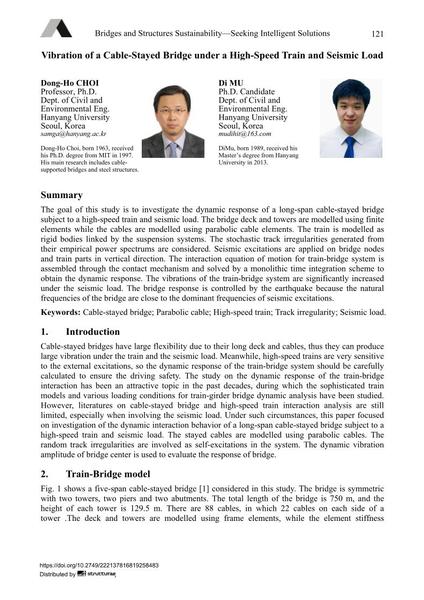Vibration of a Cable-Stayed Bridge under a High-Speed Train and Seismic Load

|
|
|||||||||||
Détails bibliographiques
| Auteur(s): |
Dong-Ho Choi
Di Mu |
||||
|---|---|---|---|---|---|
| Médium: | papier de conférence | ||||
| Langue(s): | anglais | ||||
| Conférence: | IABSE Conference: Bridges and Structures Sustainability - Seeking Intelligent Solutions, Guangzhou, China, 8-11 May 2016 | ||||
| Publié dans: | IABSE Conference, Guangzhou, China, 8 – 11 May 2016 | ||||
|
|||||
| Page(s): | 121-126 | ||||
| Nombre total de pages (du PDF): | 6 | ||||
| Année: | 2016 | ||||
| DOI: | 10.2749/222137816819258483 | ||||
| Abstrait: |
The goal of this study is to investigate the dynamic response of a long-span cable-stayed bridge subject to a high-speed train and seismic load. The bridge deck and towers are modelled using finite elements while the cables are modelled using parabolic cable elements. The train is odelled as rigid bodies linked by the suspension systems. The stochastic track irregularities generated from their empirical power spectrums are considered. Seismic excitations are applied on bridge nodes and train parts in vertical direction. The interaction equation of motion for train-bridge system is assembled through the contact mechanism and solved by a monolithic time integration scheme to obtain the dynamic response. The vibrations of the train-bridge system are significantly increased under the seismic load. The bridge response is controlled by the earthquake because the natural frequencies of the bridge are close to the dominant frequencies of seismic excitations. |
||||
| Mots-clé: |
Pont à haubans charge sismique
|
||||

